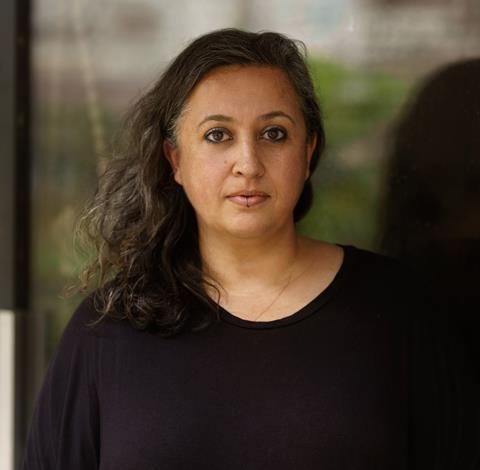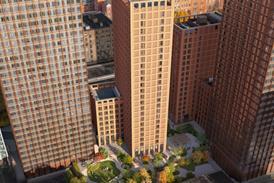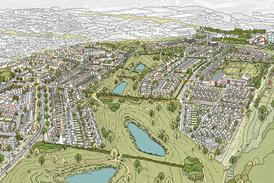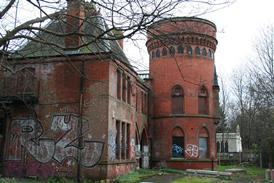Pereen d’Avoine considers how forgotten landscapes can become the foundation for sustainable, socially rooted communities

Some of the most promising opportunities for creating better places are hiding in plain sight. From long-abandoned brownfield sites to underused corners of the green belt now redesignated as greyfield, these areas have often been dismissed or overlooked. Yet they offer a chance to do things differently.
Rich in history, close to existing communities, and already touched by development, they are well placed to support a more thoughtful, sustainable and inclusive kind of growth. Recognising their value means rethinking not just where we build, but how and for whom.
The government’s recent push to loosen development rules on brownfield and newly designated greyfield land is intriguing, but it is not enough to just tally up 1.5 million new homes on paper. Real community building demands more: robust infrastructure, creative reuse of space, and a dash of genuine human scale.
In Diploma Unit 14 at the Architectural Association, which I teach with my father, Pierre d’Avoine, we have been exploring brownfield and greyfield sites that are teetering between forgotten history and potential revival. Last year’s field trip to Northamptonshire unveiled sites once brimming with creative energy, now left barren.
This year, our journey took us to the Black Country, the industrial revolution’s hallowed ground. Here, the empty expanses whisper stories of past ingenuity and beckon us to envision thriving, thoughtful communities emerging from the ruins.
Regeneration is about more than merely constructing houses, it is about cultivating environments where people actually want to live. Sure, quality housing matters, but it is the mix of amenities, job opportunities, leisure spaces, and accessible green areas that turns a collection of buildings into a living, breathing settlement.
Our environment is not just a backdrop, it is an active participant in daily life, and it deserves more than a purely utilitarian approach.
Enriching new communities with a mix of residential typologies, thoughtfully integrated workspaces, retail and cultural hubs, and of course greenery, will prevent them from becoming yet more commuter belt towns with no wider appeal to potential residents.
Rather than erasing this history, regeneration projects should seek to preserve and celebrate it
Efficient transportation is a must too, not only to provide links within the community, but also allowing for external connection. Without reliable trains, buses or cycling infrastructure, people remain car-dependent, undermining the sustainability goals of new developments.
Brownfield sites are more than just vacant plots waiting to be filled with new housing – they often have deep industrial or cultural histories that shaped the communities around them. Whether it is an old textile mill, a disused railway yard, or a former foundry, these sites hold stories of craftsmanship, industry and local identity.
Rather than erasing this history, regeneration projects should seek to preserve and celebrate it, using architecture as a bridge between the past and the future.
Retrofitting and repurposing old buildings is not just environmentally responsible (reducing embodied carbon and construction waste), it also helps maintain a sense of place. Converting old warehouses into modern housing, creative workspaces or community hubs keeps the character of a site intact while giving it new life.
One striking example of how regeneration can successfully intertwine past, present and future is Phoenix, Lewes. Situated on a 7.9-hectare brownfield site, this project embraces adaptive reuse to craft what is intended to become a self-sustaining, mixed-use community.
Rather than imposing a singular architectural vision, Phoenix employs a collaborative approach to create a diverse and vibrant neighbourhood. The development integrates a range of housing types, including genuinely affordable homes, alongside artist studios, maker spaces and independent businesses, ensuring that the spirit of Lewes’ industrial heritage is not lost but reimagined.
Sustainability is deeply embedded in its design, from energy-efficient buildings to circular economy principles that prioritise locally sourced materials and modular construction methods.
With a focus on fostering social cohesion, Phoenix also prioritises walkability, communal green spaces and flexible live-work environments. It exemplifies how brownfield regeneration can be about more than just homes, it can be about creating places where people thrive.
Retrofitting often trumps new build when it comes to carbon footprint, making efficient use of the structures already in place. The government’s brownfield sites, with their potential for 1.3 million homes, should inspire us to rethink and repurpose.
When nearly 40% of global carbon emissions come from construction, every recycled fixture and repurposed material counts. The challenge is to bridge the gap: how do we satisfy housing needs while still making environmental progress?
With imagination, investment and care, these overlooked landscapes can become the foundation for communities that are environmentally responsible, socially rooted and genuinely liveable
In the Black Country, our students are even exploring how ecological agricultural practices can breathe new life into newly designated greyfield areas. Improved soil conditions, greener vegetation, sustainable drainage systems and cleaner surface water are just some of the potential benefits.
More green space means a better quality of life, bolstering mental health and encouraging outdoor activity, a win for everyone.
It is easy to think of green space in simple terms, parks, gardens, maybe a tree-lined avenue or two. But there are other ways councils can increase biodiversity.
It is about creating environments that support local wildlife, restore natural ecosystems and improve air quality while making places more enjoyable to live in. Green roofs, pocket forests, and areas designated to rewilding initiatives can make new communities more ecological.
Biodiversity is not just a nice-to-have, it is essential for long-term sustainability. Greener developments support mental well-being, encourage outdoor activity, and even help with climate resilience by cooling urban areas and reducing flood risk.
The best new communities will not just include nature as an afterthought, they will be designed with it at their core.
And let us not overlook shifting public attitudes either. With rising urban living costs, more people are trading cities for the peace of the countryside.
Digital nomads and young professionals alike are finding solace and financial relief in smaller towns and villages. The challenge, and opportunity, lies in meeting this demand without defaulting to unsustainable sprawl.
Thoughtfully developed brownfield and greyfield sites, especially those close to existing settlements, offer a promising alternative. With strong infrastructure, appealing amenities and generous green spaces, they can support a different kind of growth, one that nurtures work-life balance, community spirit and environmental resilience.
If we are serious about building the homes we need while also addressing climate, heritage and quality of life, then brownfield and greyfield sites must be seen as more than development opportunities. They are testing grounds for a more integrated, human approach to placemaking.
With imagination, investment and care, these overlooked landscapes can become the foundation for communities that are environmentally responsible, socially rooted and genuinely liveable. The question is not whether we can afford to do it differently, but whether we can afford not to.
Postscript
Pereen d’Avoine is a founding director of the architectural practice Russian for Fish and a studio tutor at the Architectural Association.
















1 Readers' comment